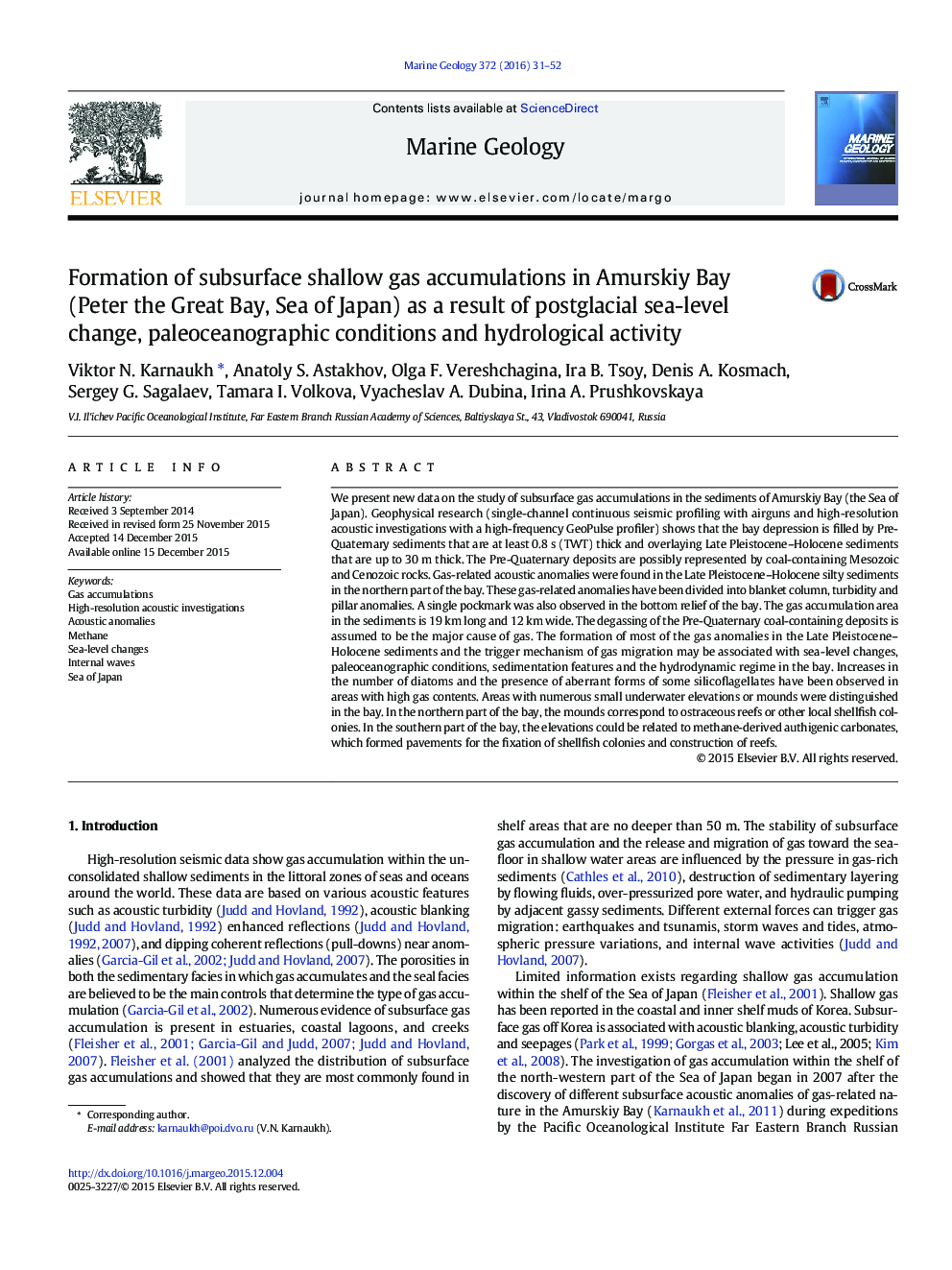| کد مقاله | کد نشریه | سال انتشار | مقاله انگلیسی | نسخه تمام متن |
|---|---|---|---|---|
| 4718150 | 1639080 | 2016 | 22 صفحه PDF | دانلود رایگان |

• We found the subsurface gas accumulations sediments of the Amursky Bay for the first time.
• Geochemical studies indicate that the gas accumulations are mostly formed by methane.
• The methane concentration reaches up to 57-59 ml/dm3 at depth 4.7 m below sea bottom.
We present new data on the study of subsurface gas accumulations in the sediments of Amurskiy Bay (the Sea of Japan). Geophysical research (single-channel continuous seismic profiling with airguns and high-resolution acoustic investigations with a high-frequency GeoPulse profiler) shows that the bay depression is filled by Pre-Quaternary sediments that are at least 0.8 s (TWT) thick and overlaying Late Pleistocene–Holocene sediments that are up to 30 m thick. The Pre-Quaternary deposits are possibly represented by coal-containing Mesozoic and Cenozoic rocks. Gas-related acoustic anomalies were found in the Late Pleistocene–Holocene silty sediments in the northern part of the bay. These gas-related anomalies have been divided into blanket column, turbidity and pillar anomalies. A single pockmark was also observed in the bottom relief of the bay. The gas accumulation area in the sediments is 19 km long and 12 km wide. The degassing of the Pre-Quaternary coal-containing deposits is assumed to be the major cause of gas. The formation of most of the gas anomalies in the Late Pleistocene–Holocene sediments and the trigger mechanism of gas migration may be associated with sea-level changes, paleoceanographic conditions, sedimentation features and the hydrodynamic regime in the bay. Increases in the number of diatoms and the presence of aberrant forms of some silicoflagellates have been observed in areas with high gas contents. Areas with numerous small underwater elevations or mounds were distinguished in the bay. In the northern part of the bay, the mounds correspond to ostraceous reefs or other local shellfish colonies. In the southern part of the bay, the elevations could be related to methane-derived authigenic carbonates, which formed pavements for the fixation of shellfish colonies and construction of reefs.
Journal: Marine Geology - Volume 372, 1 February 2016, Pages 31–52